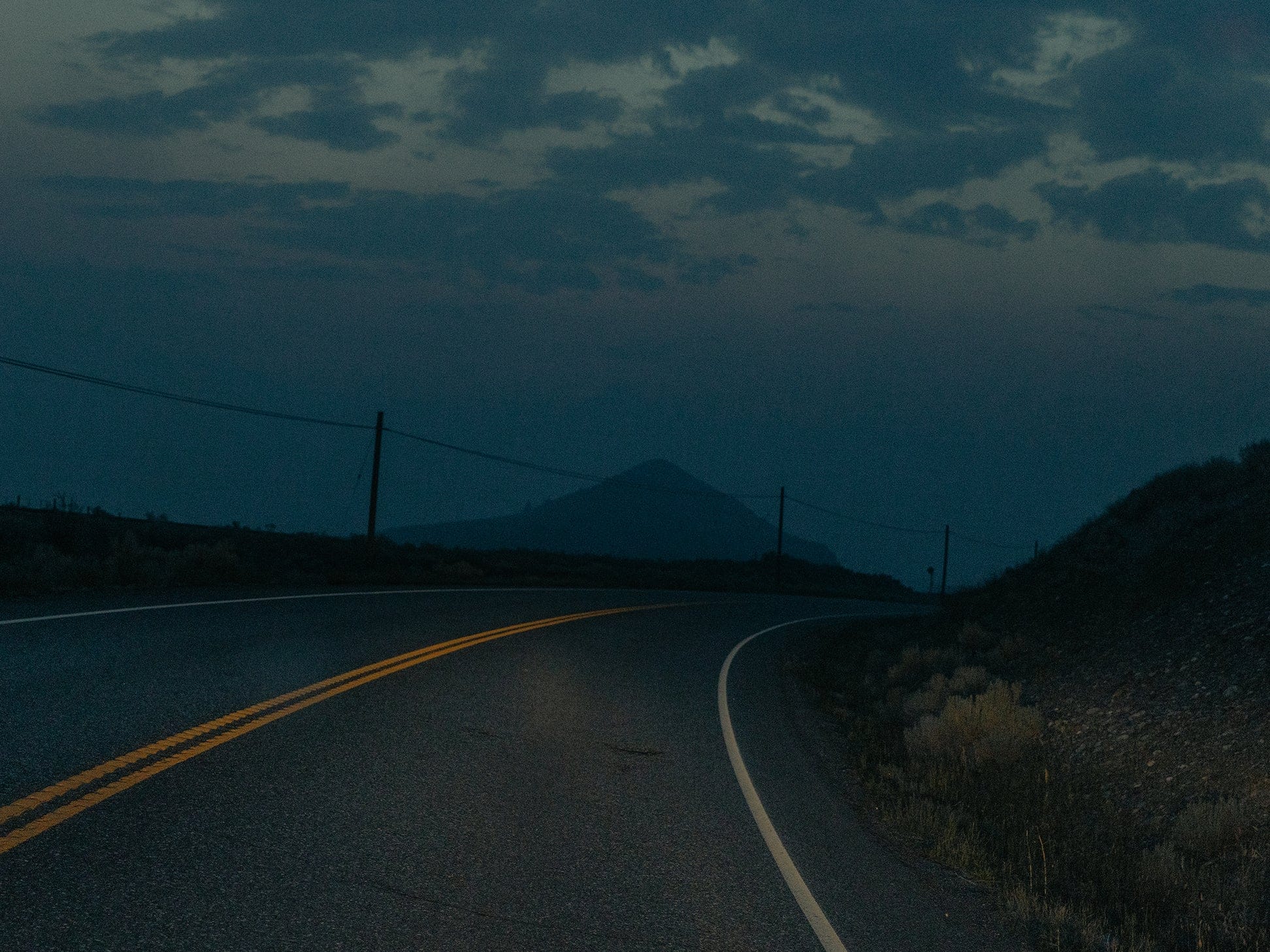How the Owners of Heath Ceramics Reimagined a Seaside Retreat

AT A MAGICAL SPOT ON THE CALIFORNIA COAST, TWO DESIGNERS CRAFT A RUSTIC VISION AROUND TWO VINTAGE TRAILERS.
A few years back, Catherine Bailey and Robin Petravic were driving down California’s Highway 1, headed home to Sausalito. As they passed through Marshall, a tiny hamlet along Tomales Bay, Bailey—a professional designer who loves kayaking and swapping put-together work outfits for camping clothes—spotted a property for sale. They grabbed the realtor’s name to call when they were back in cell range.

California
Oyster bars and taco trucks, wildfire experts and Hollywood royalty, wine-country roads and deep desert reaches.
The spot was stunning, right on the water. Tomales Bay is a narrow, 15-mile long inlet stretching along the coast of Marin County, shaped by the San Andreas Fault below. Point Reyes National Seashore marks its west side; to the east lie a handful of small towns beloved by Bay Area daytrippers drawn by fresh oysters and coastal beauty.
But the dilapidated two-bedroom cottage would have looked like trouble to most buyers. Any move to tear the house down and replace it with a big, modern vacation home would likely bring down permitting hell. Fortunately, Bailey and Petravic saw a different path.
Together, the couple runs Heath Ceramics, a venerable California pottery brand. (Bailey describes the vibe of Heath’s earthy plates and bowls and iconic coffee mugs: “Modern yet warm and approachable, and ‘of this place,’ with texture and color coming from the nature that surrounds us in Northern California.”) Besides keen style sense, they also brought the spirit of seasoned road-trippers to the Tomales property. The place reminded them of out-of-the-way, dispersed camping spots. And it brought to mind possibilities suggested by various places they’d traveled: El Cosmico, a famed campground of trailers and yurts near Marfa, Texas, or huts in Chile.


As Petravic puts it: “We like to take things where we can see a lot of potential that other people would not.”
By the time the sale went through, they already had visions of installing vintage aluminum trailers along the bay shore. They dubbed the place Fisherman’s Camp, and set about crafting a refuge for one of the pursuits they love most.
“We found this property,” Bailey says, “or it found us, and we thought, oh, this is camping.”
Bailey and Petravic met through work in San Francisco in the late 1990s. He was a product designer; she was the founder of her own industrial design firm. A few years later, after moving across the Golden Gate to Sausalito, they stumbled upon the Heath Factory.
Founded by Edith and Brian Heath in 1948, for decades the brand’s simple, indoor-outdoor ceramic tableware was a symbol of modern California living (and a rejection of the delicate stuffiness of fine china, which Edith disdained). But by 2003, the company had fallen on hard times. Though museums and collectors coveted Edith’s ceramics, Brian had died, and Edith was in ill health.
Recognizing an opportunity, the pair bought Heath in 2003 and set about reviving this piece of West Coast design heritage. Petravic serves as the CEO—“chief everything officer”—while Bailey is the brand director. They still run the original factory in Sausalito and have added a retail store and showroom in Los Angeles, as well as one in San Francisco’s Ferry Building, and a tile factory in its Mission District.
“We like to take things that have a history to them, and then layer on top of that,” Petravic, a calm and earnest presence, says. “That’s kind of what we look for—those challenges someone else wouldn’t want to take on.”

For both Bailey and Petravic, family and road-trip life have long been intertwined. Bailey grew up going to the RV show in Asbury Park, New Jersey, and dreamt of one day having a Chevy Trans Van. After Petravic’s parents moved from England to New Jersey, they bought a Volkswagen bus. His dad added beds and some storage, and they spent two consecutive summers driving cross-country to Colorado.
In 2004, when Bailey was pregnant with their son, Jasper Bailey-Petravic, the couple bought their first van for their own family trips: a Volkswagen Eurovan. But Bailey found being confined in a small space with two giant Newfoundland dogs (and, she says, a heightened sense of smell) too miserable to stomach. “The dream was put at bay for a while,” she says.

But as their son grew, so did the appeal of long road journeys. “There is a moment when you leave on a road trip when all of a sudden you shed all the weight you had before you left your house,” Petravic says. “And there is another moment, about a week or so later, when you stop thinking about the routine of how you’re living. You just get in a very different mode. That’s a nice way to be as a family.”
When Jasper was around 12, they decided to devote summer vacation to a weeks-long overland trip to Alaska, leaving Heath in the hands of their employees, calling in for weekly check-ins.
“I wanted to see things that I had never seen before,” Bailey says. “You go to Alaska, and the whole world looks different. You go to Alaska because you want to see things that are more pristine.”
For years, the three of them and their dog repeated the trek north in Mercedes Sprinters, watching the conveniences of life fade with each mile, appreciating the nature around them. Those experiences steeped the family in the sensations of camping life—adjusting to changing temperatures, noticing shifts in natural sounds and smells. They outfitted their current rig, a Ford E-350, with a pop-top, so they’re still sleeping in the ambient temperatures and fresh air. They didn’t install a stove, because they’d rather cook outside with their camping stove. The doors of the van feature fold-down surfaces so they can prep food al fresco. These days, it’s how they prefer to live.
“Having that happening around you tunes you into something other than yourself,” Petravic says. “It gives you space to think and be a bit healthier.”
“Those trips changed what we wanted,” Bailey says. “No longer was a house with a nice kitchen the goal.”


Fisherman’s Camp lies just south of Hog Island Oyster Company and the Marshall Store (which, name aside, is also a seafood/ oyster spot). It’s a small, gravel-lined plot with a long wooden dock the family now uses to jump into the bay for a swim, for “dock bowling” on the Fourth of July, and to tie up their Boston Whaler boat.
Shortly after the sale went through, Bailey went online in search of “tin can” trailers, and discovered a model made by the Spartan Aircraft Company of Oklahoma. In 2019, not long before the pandemic began, the couple had it installed across from the original cottage, looking out across the yard to the water. The ‘51 Spartanette is pristine: wood-paneled with a kitchen, mint-green bathroom, bedroom and its original Frigidaire, made by General Motors. The fridge still works, but it’s so loud, they prefer to leave it unplugged.
Bailey made curtains out of a red-and-white deer-print fabric and topped the original-but-remade sage green couch with throw pillows sold through Heath. In the bedroom, an original fold-up vanity is full of vintage pennants picked up at an antique store in British Columbia. A pink-and-white ombre Heath vase sits on a corner table in the kitchen. The cupboards are full of Heath dishes too imperfect to be sold in the store, but too useful to send to a landfill.

Soon, they also found a second, smaller Spartanette, a ’48 with a bedroom and kitchen, but no bathroom. “They are so rare, when we found a matching one, it was like the universe telling us we needed to get it,” Bailey says. Now the two trailers sit in an L shape, sharing a wooden deck, an enclosed flushing toilet and outdoor sink.
“Our approach is to draw heavily from what surrounds you—the landscapes, the culture and what has existed in the past, and build with it and from it,” Bailey says. “We are nostalgic preservationists at heart. We build on whatever existed, and the aesthetic forms from that as well.”
For about a year, as they renovated their cottage, the family of three called the Spartanettes home, sometimes all staying in the larger model along with their dog, Ponch. Sitting on the green couch where Jasper sometimes slept, Petravic calls the experience “cozy,” rather than claustrophobic. Instead, he reserves that word for their main residence, a larger house in Sausalito “where you can’t feel the air.”
Now that the cottage is finished, Bailey and Petravic usually sleep there when they’re sojourning at Fisherman’s Camp. And though a nice kitchen wasn’t the goal, they do now have one, complete with a green, triangle-tiled Heath backsplash. But Petravic still makes a fire outside every morning and night, and they cook al fresco as much as possible, often in the pizza oven they made with pavers from Home Depot, or with vegetables that Bailey has grown in the small greenhouse they installed behind the trailers. They find the Spartanettes to be great places to work or read a book. And when they invite friends to stay—as many as 20, on occasion—they lend out the beds in the house and the trailers, and invite some guests to pitch tents along the water. Once, the scene got so crowded, Bailey slept in their van.
For Bailey and Petravic, a single thread runs through these pieces of their life: the work at Heath, their love of camping and the set-up at Fisherman’s Camp; an underlying simplicity; and a feeling of connection, whether to nature, family and friends or to materials and craft.

Elise Craig
Elise Craig is the Editorial Director for IDEO, a global design consultancy helping the world’s most audacious dreamers create braver tomorrows. Her writing has appeared in The New York Times Magazine, The California Sunday Magazine, Wired, Marie Claire, and The New York Times for Kids. She was previously director of editorial operations and strategy at Pop-Up Magazine, a live magazine show that toured the country. She is based in San Francisco.
Elise Craig is the Editorial Director for IDEO, a global design consultancy helping the world’s most audacious dreamers create braver tomorrows. Her writing has appeared in The New York Times Magazine, The California Sunday Magazine, Wired, Marie Claire, and The New York Times for Kids. She was previously director of editorial operations and strategy at Pop-Up Magazine, a live magazine show that toured the country. She is based in San Francisco.






